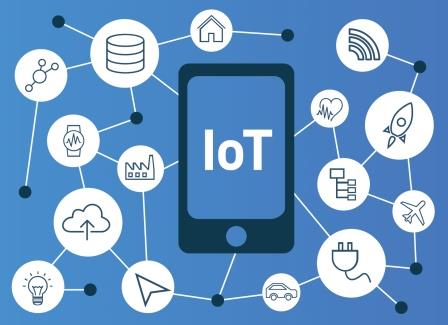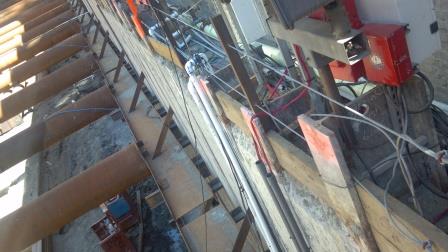

Printable PDF version
Subscribe to our newsletter
IoT and Construction
Net Zero and the Envelope
When's the Next Recession
Construction
Management Specialists
111 Pine Street, Suite 1315
San Francisco, CA 94111
(415) 981-9430 (San Francisco office)
1663 Eureka Road
Roseville, CA 95661
(916) 742-1770 (Sacramento office)
9449 Balboa Avenue, Suite 270
San Diego, CA 92123
(619) 518-5648 (San Diego office)
8538 173rd Avenue NE
Redmond, WA 98052
(206) 571-0128 (Seattle office)
2063 Grant Road
Los Altos, CA 94024
(650) 386-1728 (South Bay office)
P.O. Box 492115
Los Angeles, CA 90049
(424) 343-2652 (Los Angeles, CA office)
www.TBDconsultants.com
There are a lot of things connected to the Internet already, from PCs, Macs, laptops, tablets, smart phones, even iPods and smart TVs, but these are not the 'things' that the Internet of Things (IoT) refers to. Those 'things' are more likely to be in the form of sensors and operators.
You are probably using the Internet of Things already. If you have a burglar alarm system in your house that is constantly monitored, it is probably connecting to the monitoring company over the Internet. If you are on vacation and realize you forgot to set up your DVR to record your favorite show, you may be able to remotely connect via the IoT and ensure the show is waiting for you when you get back.

Keeping track of materials and small tools on a construction site has always been a problem, but the IoT envisions almost everything being tagged in some way, so that its location can be tracked. That tracking will also identify when materials are running short, providing an automated inventory process.
Large pieces of equipment or plant become uneconomic if they are standing idle, and the IoT would make it easier to monitor usage and ensure that they kept being productive. That monitoring would be automated, with alerts being issued as extended idle periods are noted. Automation of processes is also seen as a use for the IoT, which could increase the safety of sites by keeping people out of harm's way, but would also mean that less people would need to be employed on a construction site. With the current shortage of craftsmen, that may not necessarily be a problem.
Having plant or equipment break down on site can be costly, and the automatic monitoring of equipment, feeding the information back to the supplier and/or owner so that preventive action can be taken beforehand, is another use of the IoT. Your car may already be doing that for you.

Sensors can monitor the condition of bridges and other structures, to show how they are performing under normal conditions or in the event of a natural disaster, such as an earthquake or hurricane, and quickly inform the appropriate authority when preventive or remedial action is necessary. Similar sensors can track and adjust energy usage, ensuring that the building is performing to specification.
It has also been suggested that construction staff could wear a monitor, which could issue alerts if approaching a dangerous area, and feed information directly into the company payroll system. The data could also be used to track the true cost of processes and procedures, improving the construction cost estimating records. Such monitoring naturally gives rise to privacy issues, which extend beyond the construction site. With your car, dishwasher, HVAC system, and other household objects feeding information to who knows where, you can be sure that marketers will be interested in getting their hands on the information in order to better target goods and services at you. People have already found ways to hack into a computer's Webcam in order to literally see what you are doing, and a proliferation of Internet-connected security cameras, baby monitors, and the like, will only make their job easier.
Security therefore becomes a serious issue, but one that often gets neglected. Many of the gadgets that form the IoT are small and relatively inexpensive, and additional circuitry and coding to address security may not seem worthwhile. But while someone playing remotely with your thermostat might just be annoying, if they can gain remote control of your car while you are driving it, that could be life-threatening to you and anyone around. And the possibility of that occurring has been demonstrated. Just think of the damage someone could inflict by taking remote control of an excavator.
Since more and more products will be containing electronics, that will make the recycling or disposal of the objects more problematic. Also, it could end up making the life cycle of objects shorter, because they may end up being replaced not because they are worn out but because technology has improved and made them old fashioned.
The Internet of Things does offer a lot of exciting possibilities, but as with all new technologies it comes with issues that need to be addressed.
As the goal of achieving Net Zero becomes more common, we look at how the enclosure of the building can assist in reaching that target.
Some people are suggesting we are on the edge of a new recession that they say will make the Great Recession of 2007-2009 pale in comparison. In this article our editor looks at what he sees as the issues related to when another recession is coming.
Design consultant: Katie Levine of Vallance, Inc.